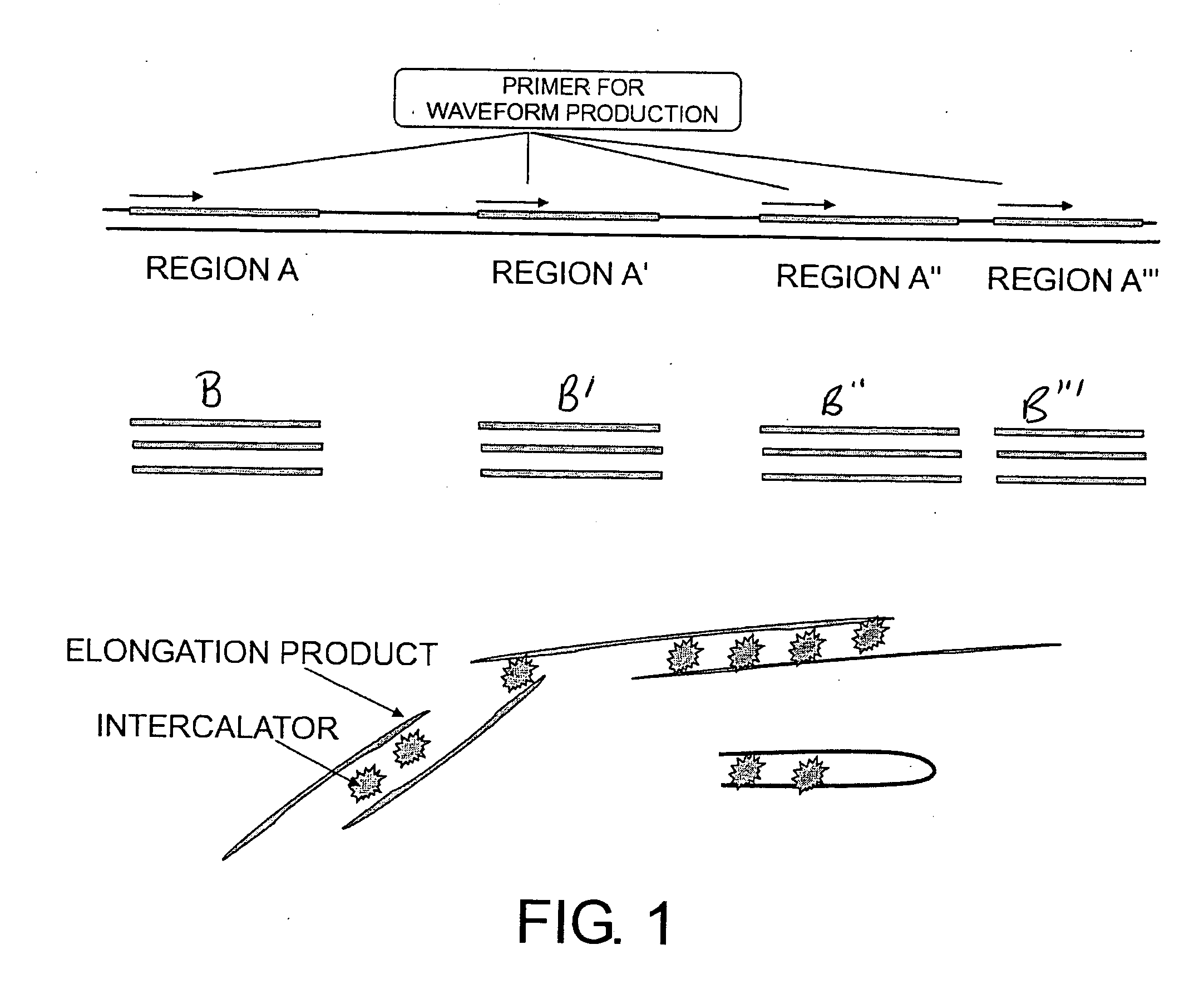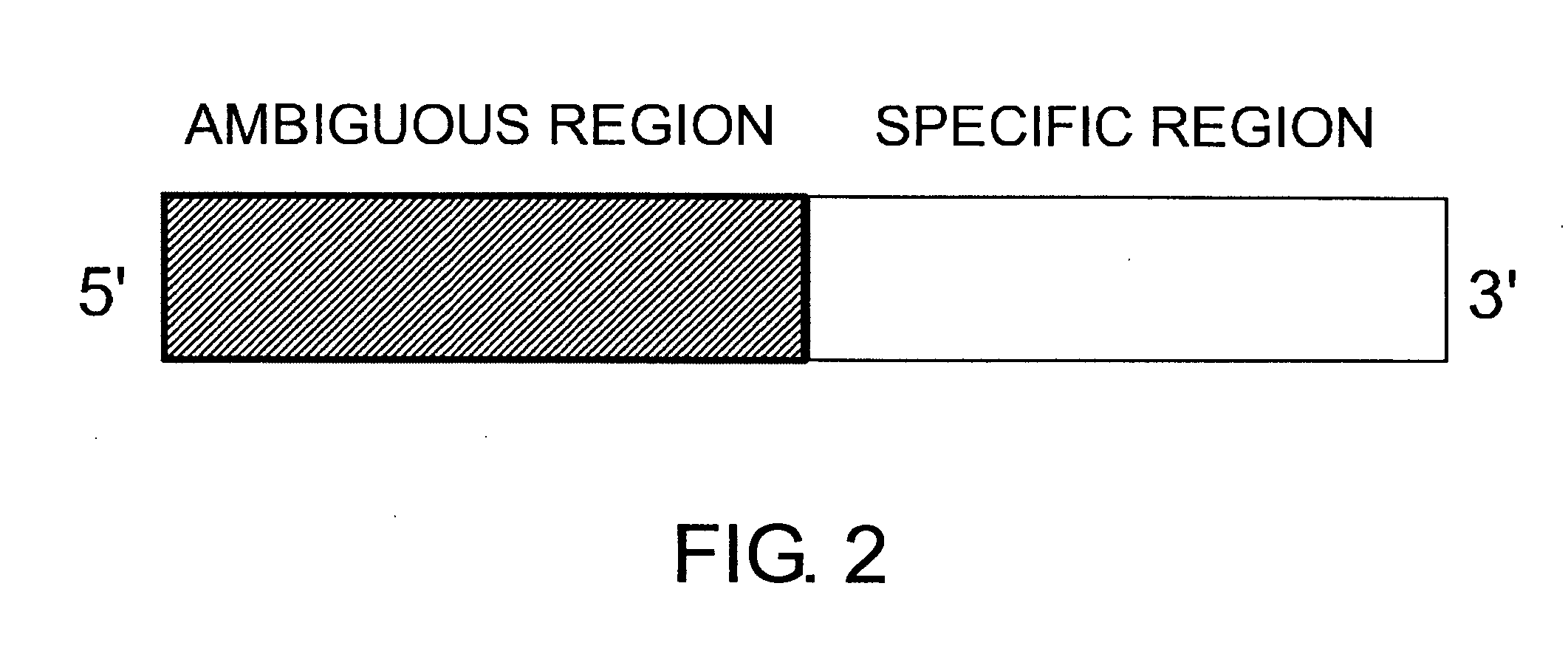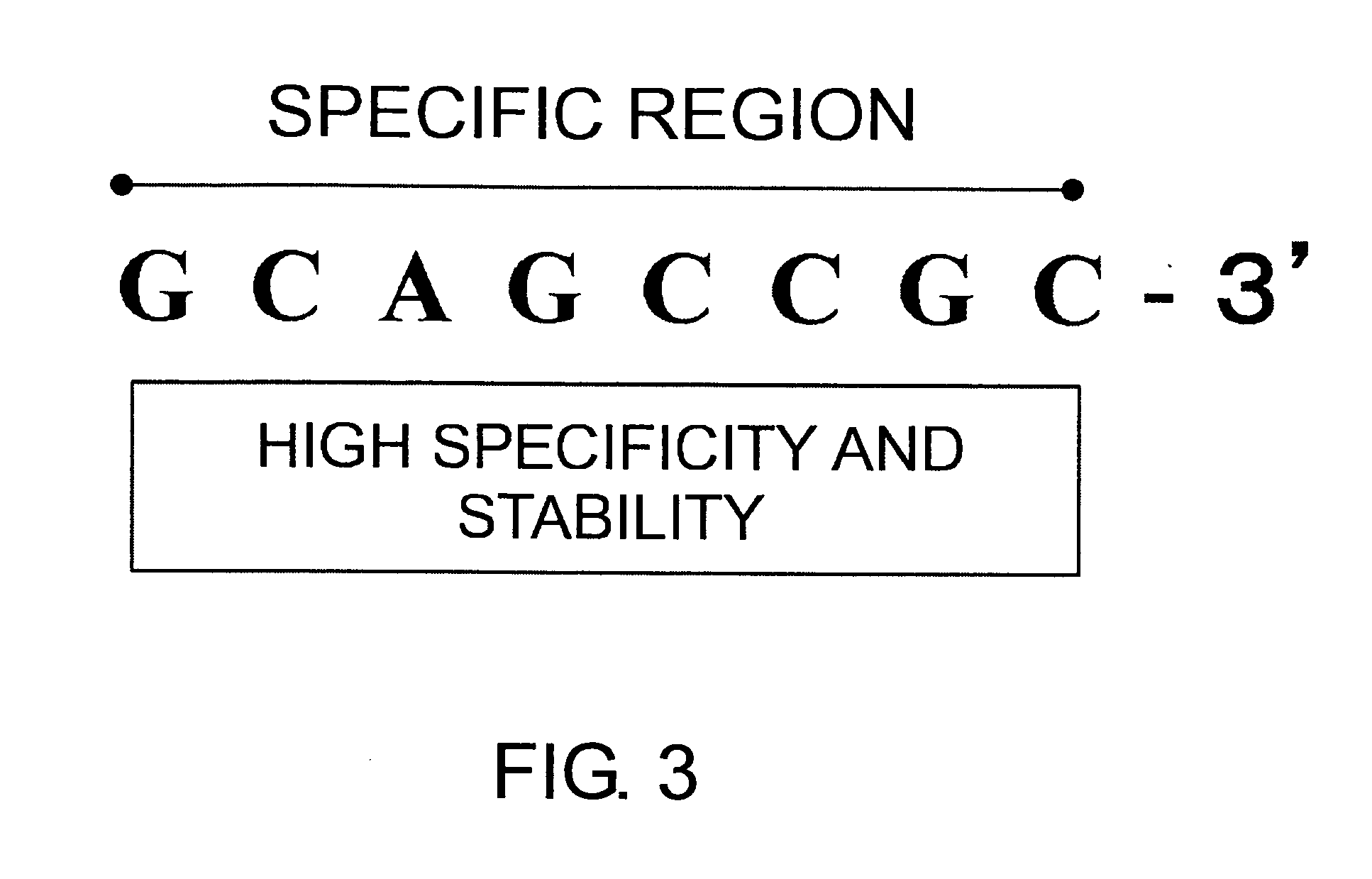Method of identifying nucleic acid
- Summary
- Abstract
- Description
- Claims
- Application Information
AI Technical Summary
Benefits of technology
Problems solved by technology
Method used
Image
Examples
example 1
Design of Ambiguous Primers
[0289] As mentioned above, the present invention provides ambiguous primers comprising a specific region and an ambiguous region. This concept is shown in FIG. 2. The ambiguous primers represented by FIG. 2 can anneal not only to a specific nucleotide sequence but also to analogous sequences that are similar to this sequence since they have an ambiguous region at their 5′ end. When actually using a primer complex for waveform production that has such a structure, preferably, the conditions indicated in (a) to (e) below are adjusted:
[0290] (a) primer length
[0291] (b) sequence of the specific region
[0292] (c) sequence of the ambiguous region
[0293] (d) primer amounts
[0294] (e) annealing temperature
[0295] Accordingly, items (a) through (e), mentioned above as examples of structural factors of the ambiguous primers of this primer complex for waveform production, and reaction conditions, were examined in order.
(a) Adjustment of Primer Length
[0296] Firs...
example 2
Identification of Bacterial Genes
(2-1) Synthesis and Identification of Bacterial Genes
[0312] BAUP65 primer (nnvhdbssga tccaaccgc / SEQ ID NO: 6) is a primer complex for waveform production that only synthesizes bacterial genes, and emphasizes the differences in dissociation curve waveform patterns between bacterial strains. BAUP65 primer was prepared for use in complementary strand synthesis and nucleic acid identification. More specifically, the primer was designed by the steps of: selecting, as the sequence of the specific region, eleven nucleotides from a
[0313] DNA sequence encoding bacterial 16s ribosomal RNA (rRNA), where the nucleotides are conserved in approximately 3,000 bacterial strains;
[0314] and then ligating an eight-nucleotide ambiguous region to this. As in the schematic representation of FIG. 5, in addition to the sequence encoding 16s rRNA, sequences homologous to 16s rRNA, such as 23s rRNA and 8s rRNA, are also expected to be simultaneously synthesized by comple...
example 3
The Use of Different Primer Complexes for Waveform Production
[0325] An identification method using a kit of this invention, as shown in FIG. 11, was simulated. An objective of the kit shown in FIG. 11 is to yield more diverse waveform patterns by utilizing primer complexes for producing multiple types of waveforms, where the primer complexes are designed by targeting different regions. This Example used three types of primers for waveform production: sPGBUP65, sPGBUPUPR, and sPGBUPFX. These primer complexes for waveform production were individually designed by selecting different regions as the target region, as shown in FIG. 12.
[0326] The same reaction solution composition as in Table 2 was used to perform the complementary strand syntheses, except that each of the primer complexes for waveform production was used instead of BUP65. Complementary strand synthesis was performed by repeating the Example 1 reaction cycle 70 times. DNAs extracted from E. coli, S. aureus, and B. cereus...
PUM
| Property | Measurement | Unit |
|---|---|---|
| Temperature | aaaaa | aaaaa |
| Temperature | aaaaa | aaaaa |
| Fraction | aaaaa | aaaaa |
Abstract
Description
Claims
Application Information
 Login to View More
Login to View More - R&D
- Intellectual Property
- Life Sciences
- Materials
- Tech Scout
- Unparalleled Data Quality
- Higher Quality Content
- 60% Fewer Hallucinations
Browse by: Latest US Patents, China's latest patents, Technical Efficacy Thesaurus, Application Domain, Technology Topic, Popular Technical Reports.
© 2025 PatSnap. All rights reserved.Legal|Privacy policy|Modern Slavery Act Transparency Statement|Sitemap|About US| Contact US: help@patsnap.com



